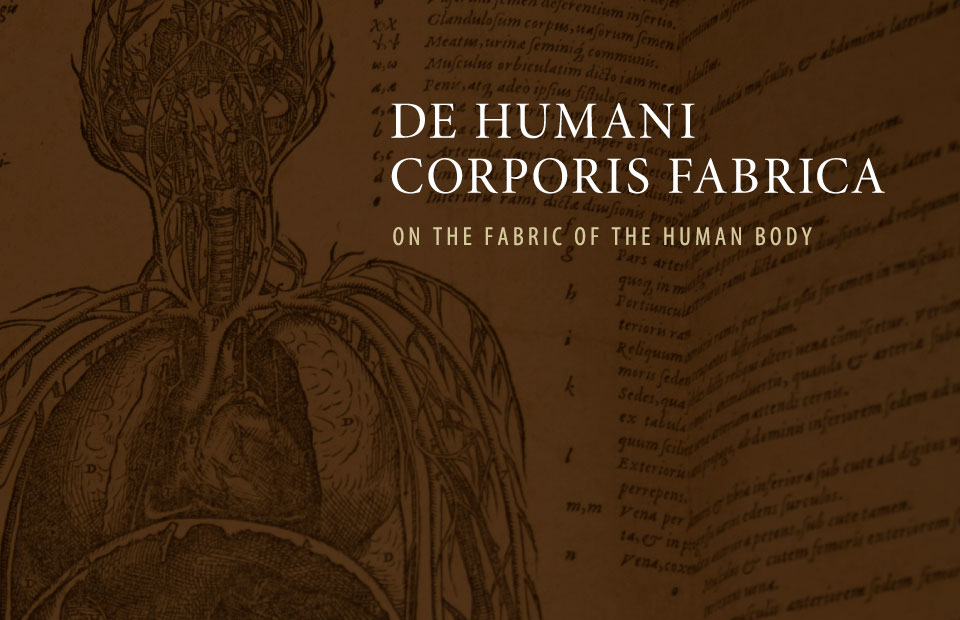
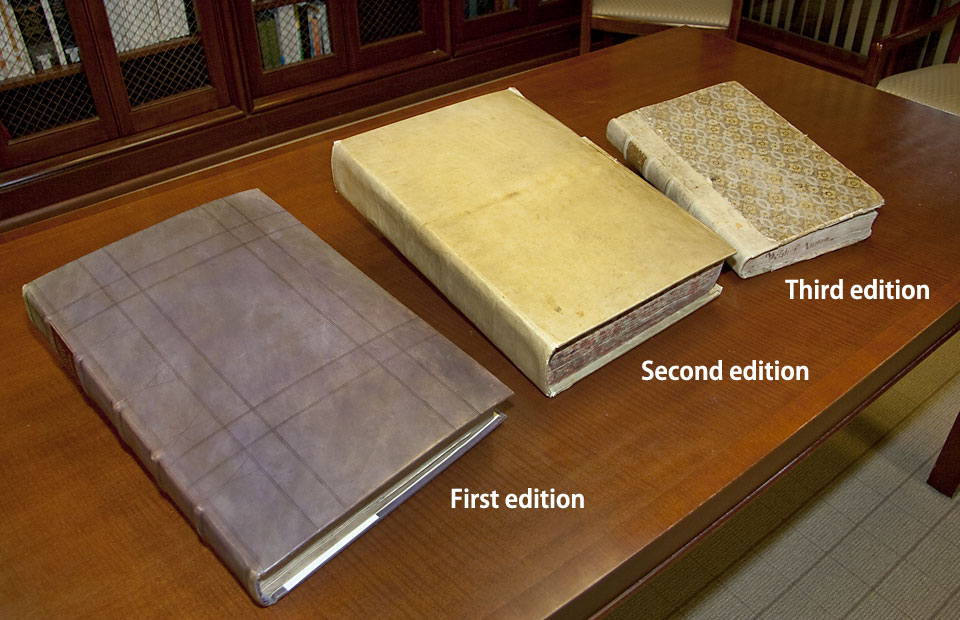
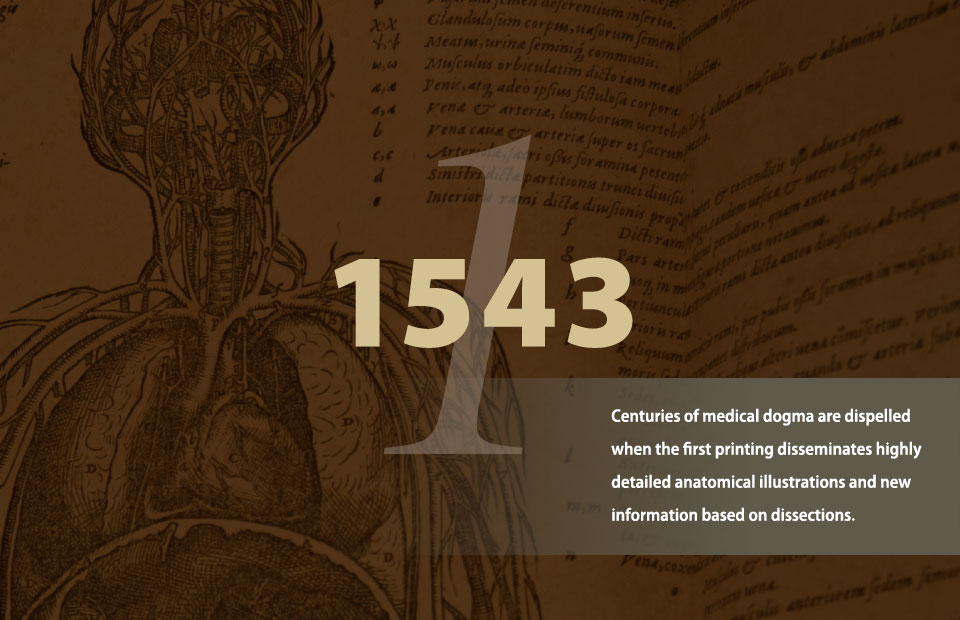
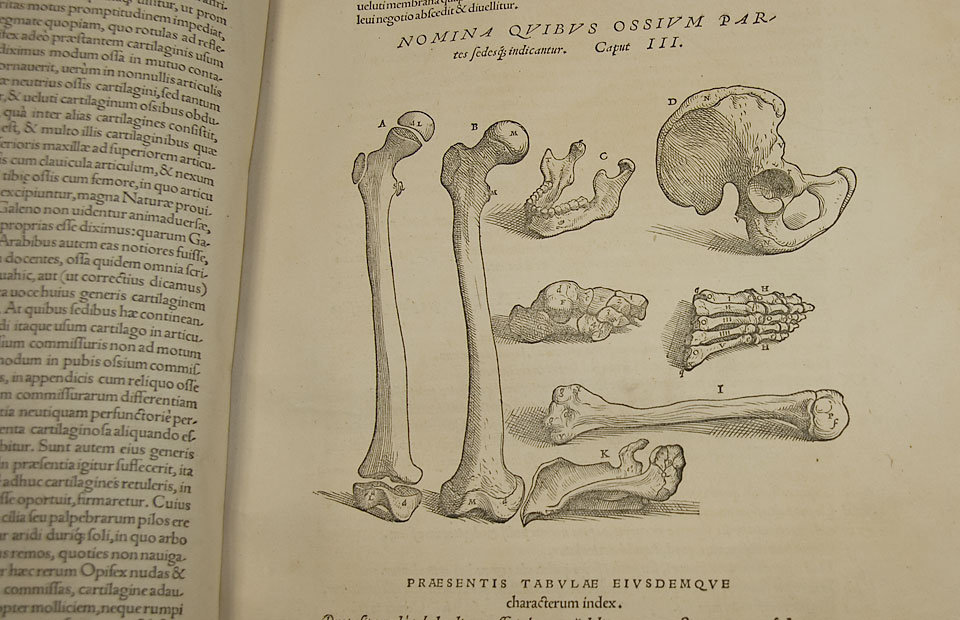
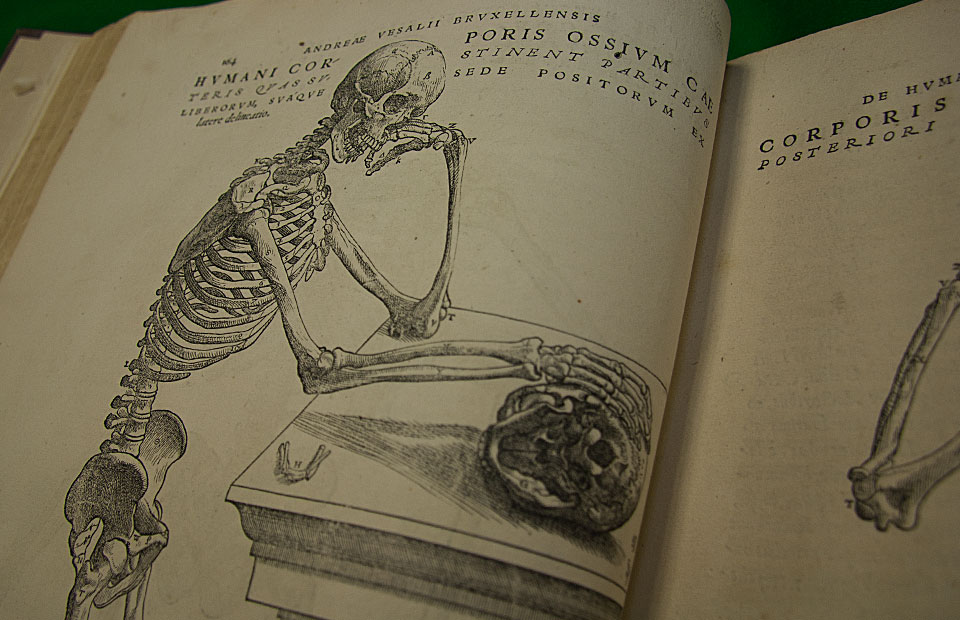
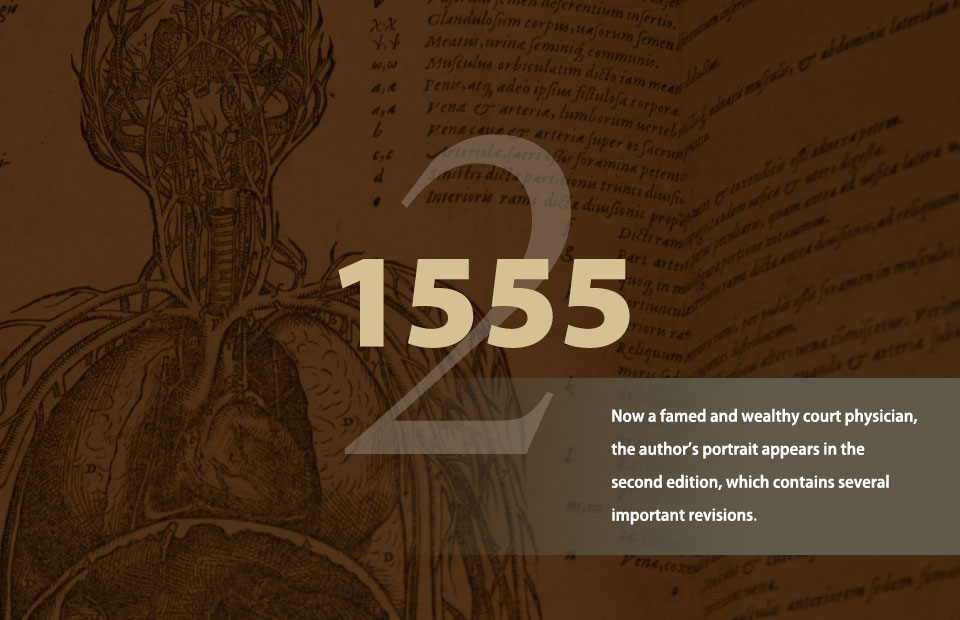

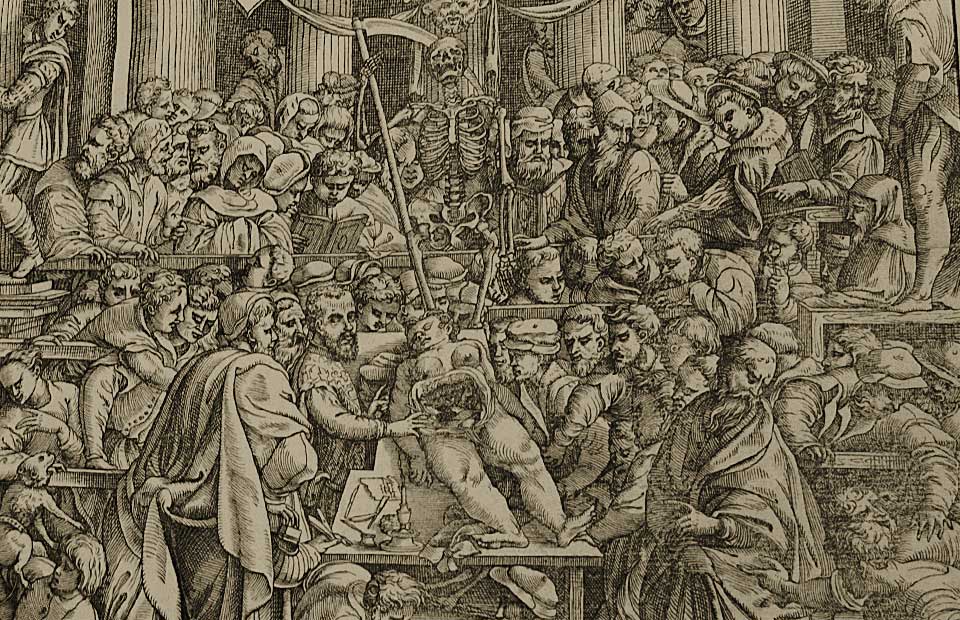
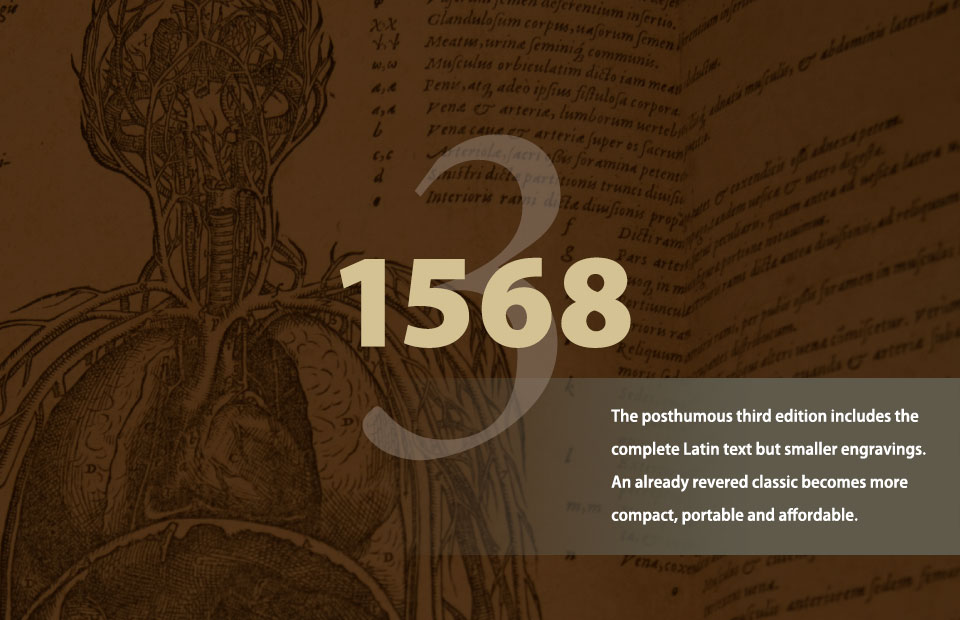
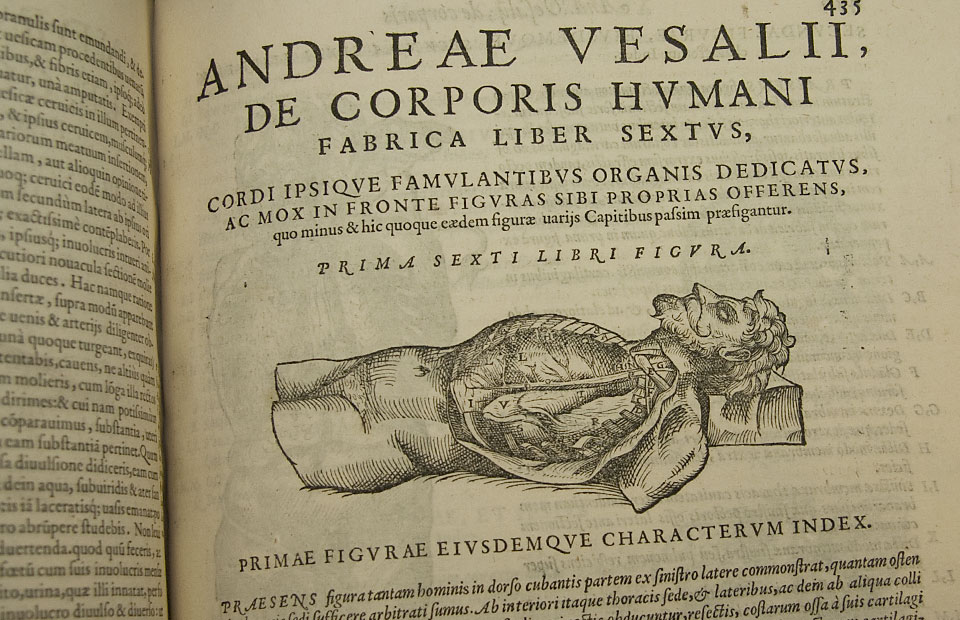
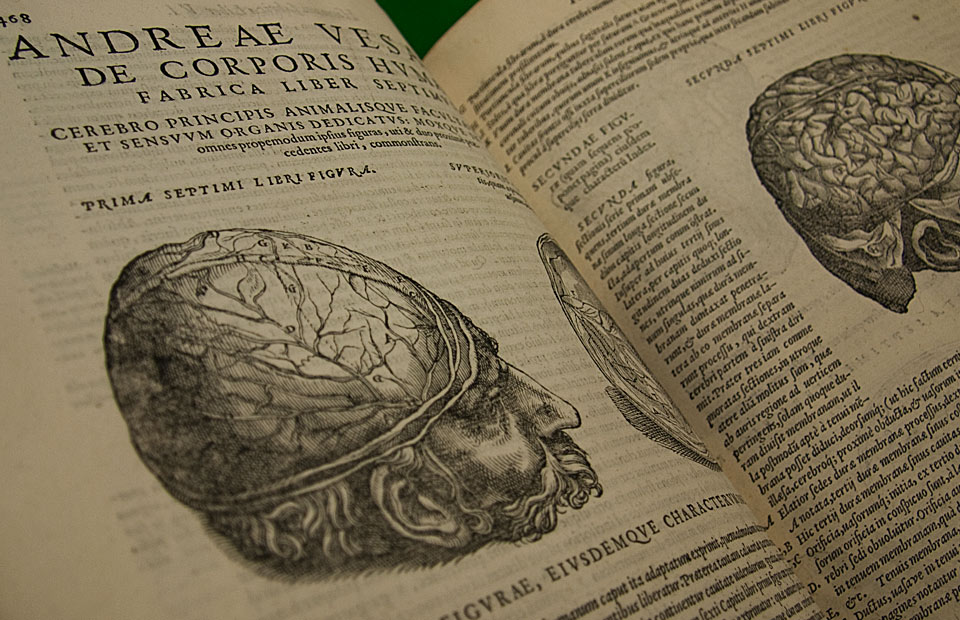
THE BIG PICTURE
Vesalius' anatomy
A nearly 500-year-old book remains relevant in the 21st century
A milestone in science, medicine and communication, Vesalius’ epic tome turned a page in European history. The essential anatomy handbook for 16th-century physicians, the book became a reference point for scholars, a prize possession for book collectors. The Bernard Becker Medical Library now holds the first, second and third editions, the third donated recently by
H. Richard Tyler, MD 51. Even with its pages yellowed and its knowledge superseded, the light of Vesalius’ daring inquiry still shines bright.
Rare book librarian Mark E. Peterson, PhD, MLS, comments on the significance of these rare books for the library's extensive collection of medical and scientific texts:
Who was Vesalius?
Andreas Vesalius was a Flemish anatomist and physician who trained in Italy and wrote in Latin, the language of education.
De humani corporis fabrica (On the Fabric of the Human Body), was considered groundbreaking for its time. What was its significance?
It’s significant in a couple of ways. Vesalius was the first person to really question the ancient anatomy written by Galen, who was revered. It was difficult for people to get around the idea of Galen’s mistakes, but there were many cases when someone leading a dissection class in Vesalius’ time would have to explain to students why what they were looking at in class didn’t match Galen’s text.
Also, the detail in Vesalius’ work is just astounding. He was using the latest methods in printing technology to show a detailed picture of human anatomy, which hadn’t been done previously. It allowed those who read the book to have a real understanding of anatomy and to be able to treat patients based on that understanding.
Other people were doing dissections in this time period. Was Vesalius the first to show anatomy in book format or did he have competitors?
Although other figures were writing anatomy books at the time, Vesalius had no real competition. In Vesalius’ generation, Bartolomeo Eustachio also was trying to make the anatomy look more realistic, but he died in the course of putting his book together, and his illustrated anatomy was not published until two centuries later.
Who was the audience for the book?
Academic physicians who were teaching and writing were the most likely to own a copy of the book. It was large and expensive even then — a big book for a grand library, not something one would carry around. It was really for physicians who trained at a university or for those who were really successful or still attached to a university or a monastery.
Who created the book’s illustrations?
There have been centuries of debate on this question, but it’s pretty much accepted that someone working in Titian’s workshop, probably Jan Joest van Kalkar, created the illustrations. Still, that’s based on only one reference, but it was definitely someone who was trained in the high art of the period.
How did Becker Medical Library acquire these books?
The first edition is part of the James Morris Ball Collection, which Washington University School of Medicine holds for the St. Louis Medical Society. An alumnus, H. Richard Tyler, MD 51, donated the second and third editions from his personal collection.
How unusual is it to hold all three editions?
There may be five places that have the first and second editions. The third edition was cheaper and is not pursued as much by collectors or kept track of as well. Perhaps there are 35 copies of the third edition in the United States and another 50 elsewhere in the world.
Vesalius corrected inaccuracies in Galen’s work; is there anything in Vesalius’ book that is known today to be incorrect?
It’s not a perfect work; one area that comes to mind is his explanation of blood vessels. Some of his mistakes were corrected in later editions, while others remained and were discussed by scholars for centuries. Like Galen before him, Vesalius was such a good writer that people were somewhat reluctant to question his work.
What can Washington University faculty, students and alumni learn from studying the three editions side by side?
For people who study the history of science, it’s interesting to note the book’s popularity over the centuries and to trace its text corrections from edition to edition. Because it was so popular, it was reprinted, becoming smaller in size so that it could be sold to more people.
The three editions as a whole illustrate the fact that this work forever changed anatomy books and the understanding of anatomy. Authors could no longer do pictures of ridiculous figures; they had to try to be accurate. It made Vesalius’ career; he ended up working as a physician at the Imperial Court. The popularity and acceptance of the book emphasized the growing role of physicians and those who took a new, scientific approach. It really was a watershed work in terms of medicine and anatomy.






